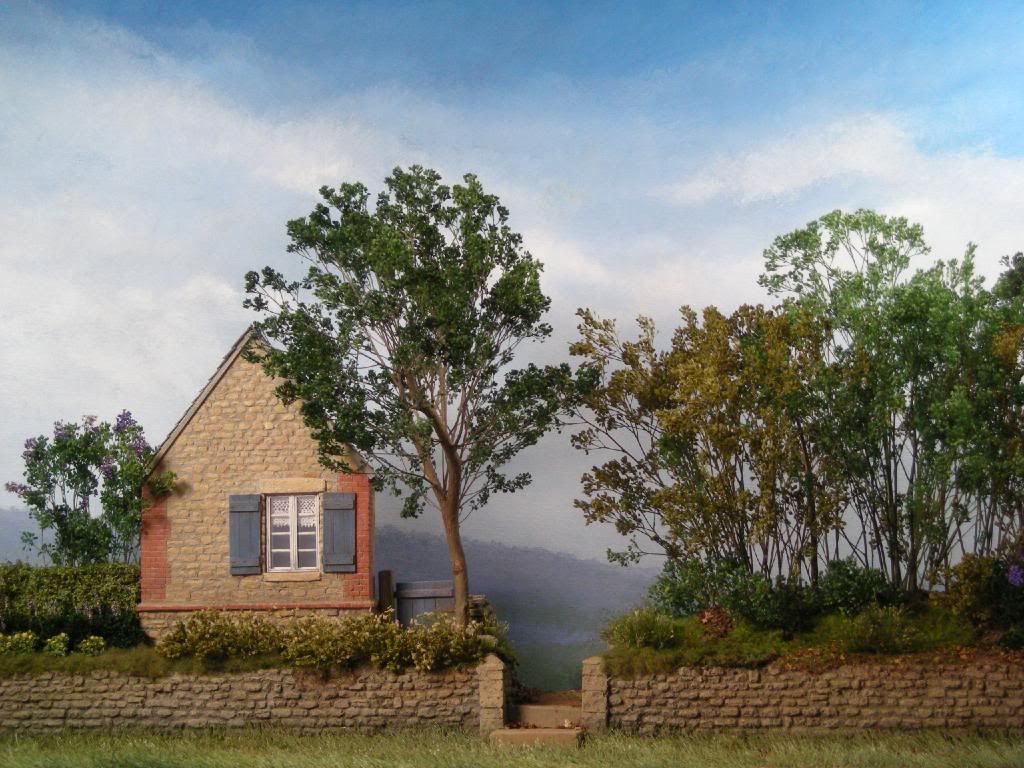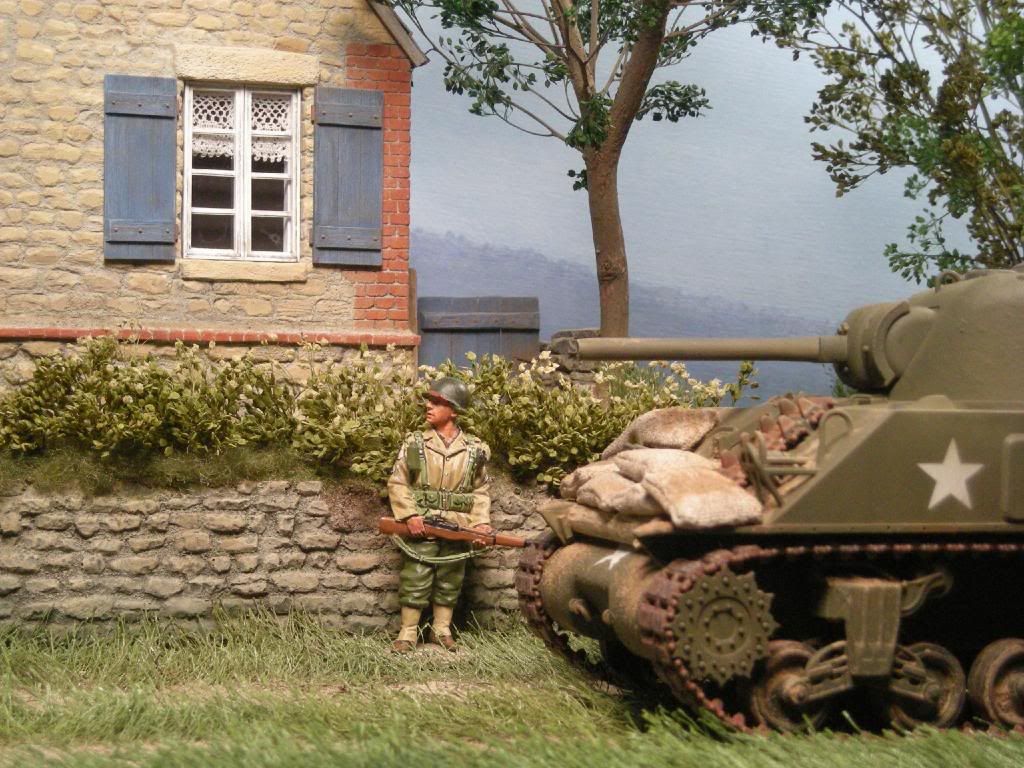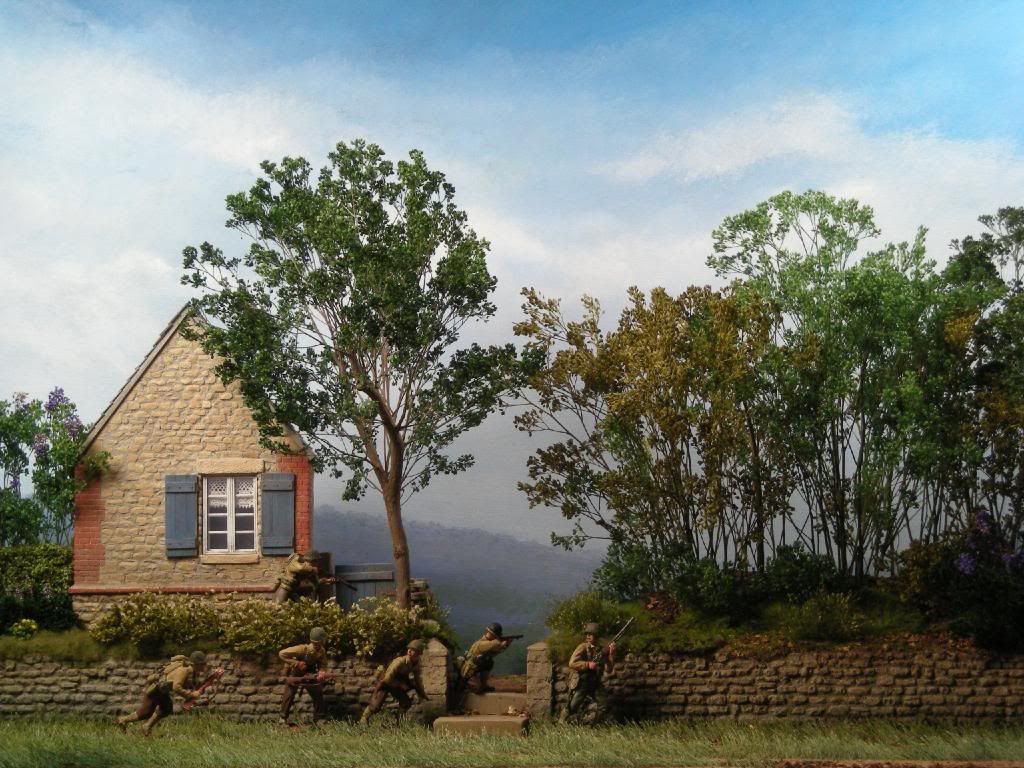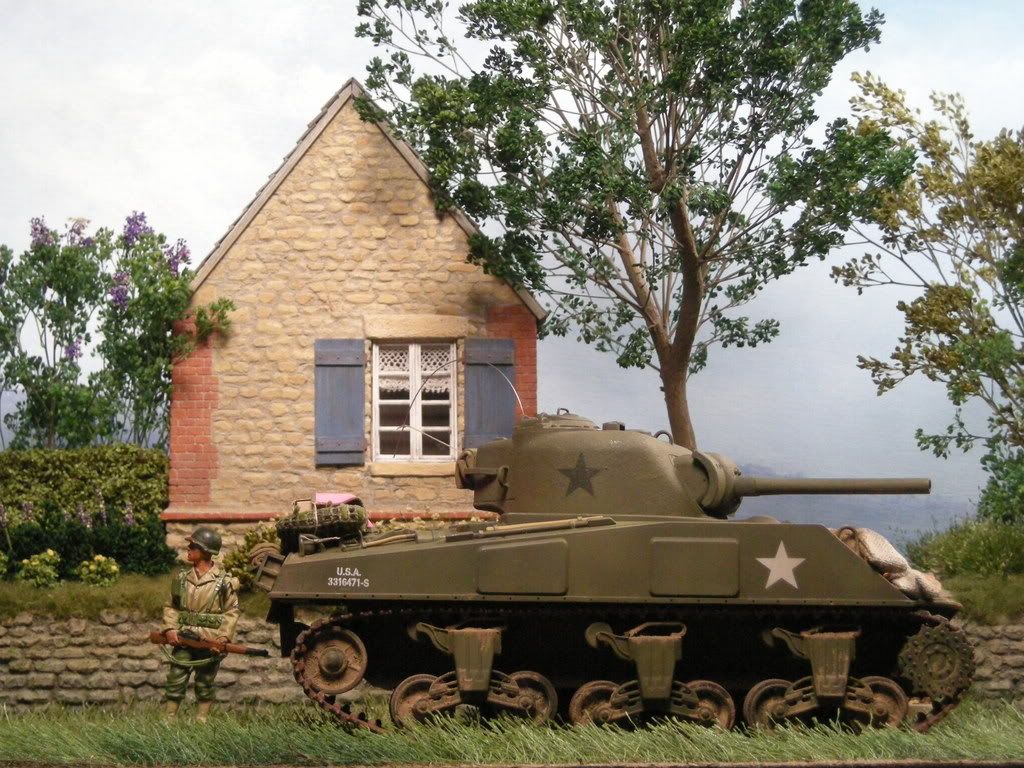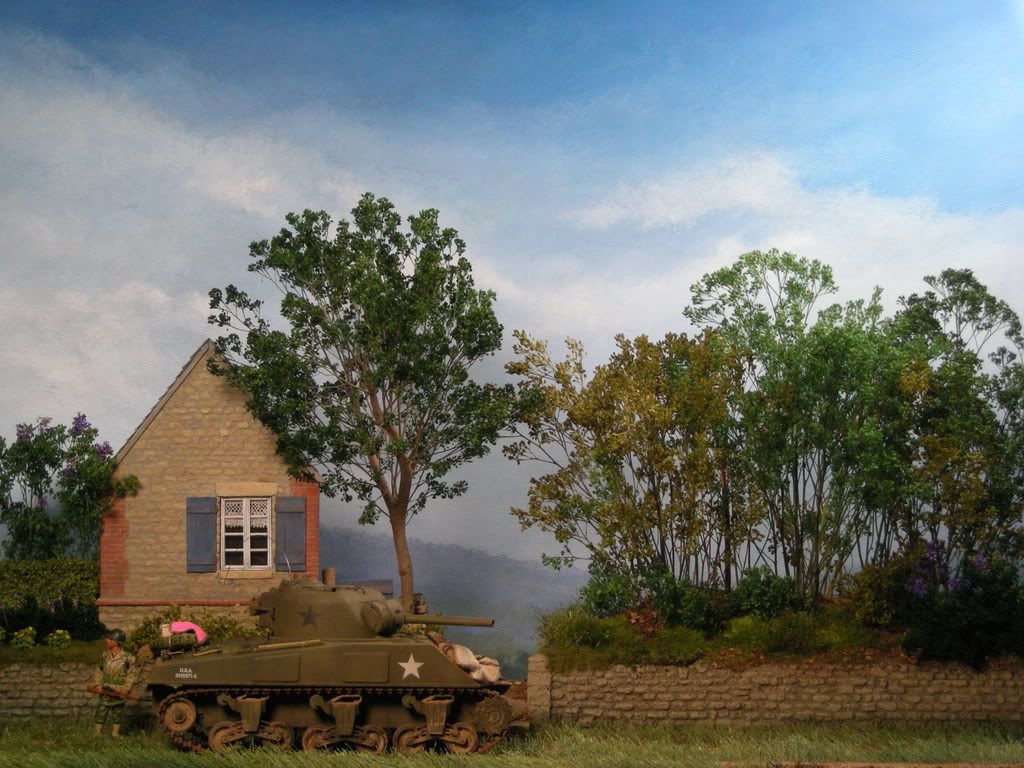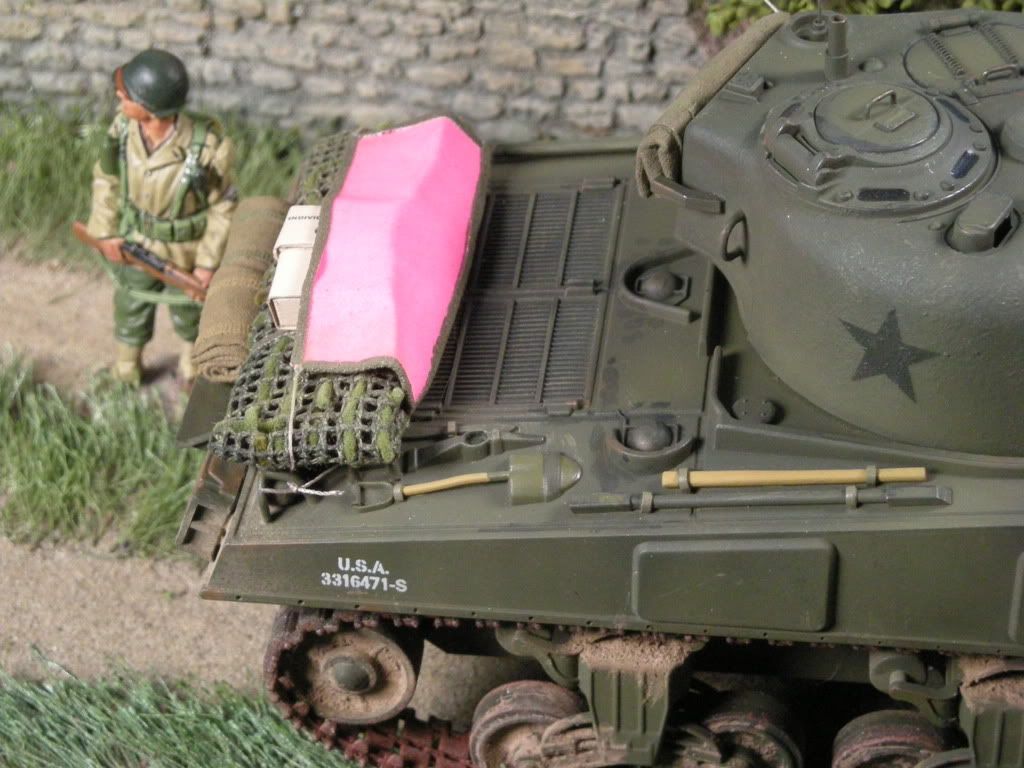Here is another image of the upgraded 1/30 Sherman with some of the Hudson & Allen stowage. It is always interesting to consider the 'colour world' of the war years. most of us grew up seeing black and white newsreels and photos. the interesting thing is that some of the iconic images were originally shot in colour and later circulated in black and white.
A good example of what we often miss are bright splashes of colour that are completely correct to add, and possible a mistake to omit.
During the Normandy campaign and the fast advance across Europe identification of friendly forces was important with the fluid positions. Add to that the Allied air supremacy and the great number of wandering fighter planes (to the Jerries, Jabos) there was a need for the air identification of Allied troops and vehicles.
The solution to this was the development of brightly colored panels to identify friendly forces.
Airborne forces dropping into Normany were equipped with AL-140 series signal panels in fluorescent red ( more orange), ceris (pink) and yellow (arc yellow).
These were usually about 10 " wide and 30" long with white on the reverse side. These could be staked out on the ground to spell out signals.
For the 'Market Garden' both US and British paratroopers were issued with the arc yellow panels cut into a triangular shape and meant to be tied to the shoulders with attached tapes.
These small ones used for 'Market garden' and 'Varsity' that I have looked at seem to made from Rayon. The larger panels used for signaling and vehicle identification were made of silk and attached to canvas. Both of these materials were good receptors of strong colour dyes, and were the materials of choice in the 1940s.
The larger panels were made for vehicle use in the AP-50 series. These were initially made 24" X 12' lengths and later 24" X 6' length. These were normally made in the Arc Yellow or Ceris for front line use and Electric Blue for support vehicles.
There are some great full colour photographs of US units fighting in Brittany with the cires panels strapped on almost every vehicle. When looking at additional black and white images of US armour operating in this area you can also see these same panels lashed down on the rear decks of tanks and TDs, and on the tops of softskins and jeeps.
Here is the photo from above for a better view.
